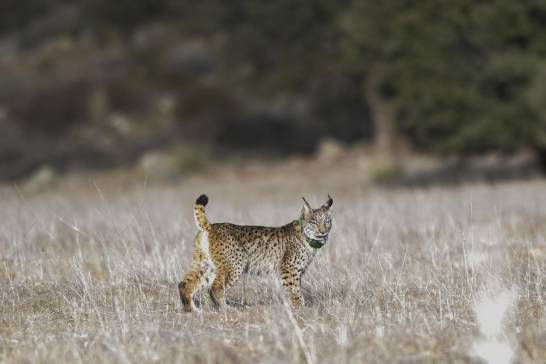Hybridization between species occurs more frequently than previously thought. It happened to modern humans. It is estimated that our genome contains about 2% Neanderthal DNA. Now we know that the The Iberian lynx would also have hybridized with neighboring species in the past.
A recent study from the Doñana Biological Station (EBD-CSIC) shows that the Iberian lynx would have interbred with the Eurasian lynx over the last few millennia, helping to increase its genetic diversity. These results are important in a current scenario where the Survival of the Iberian Lynx It is not guaranteed in the long term. The results were published in the scientific journal Natural ecology and evolution.
To conduct this study, the scientific team analyzed the DNA of three people prehistoric specimens of the Iberian lynx: one from Andújar about 4,300 years ago, another from Alcanar in Catalonia 2,500 years ago and another from the Algarve in Portugal dated about 2,100 years ago. They then compared this information with genetic data from current individuals. What they observed was completely unexpected: the genetic diversity of prehistoric lynxes was lower than that of today's lynxes.
Genetic diversity
This increase in genetic diversity throughout history could not be explained by the historical population drift of the Iberian lynx. As their population declines over time, their genetic diversity should be less, not greater.
It was also not possible that the prehistoric specimens belonged to completely isolated populations, as genetic analyzes showed that they had interbred with each other and with ancestors of today's lynxes. What then could have happened in the last three or two thousand years?
The analyzes show that modern lynxes shared more genetic material with the Eurasian lynx than older lynxes, suggesting that genetic exchange between the two species occurred over the last two millennia.
The team found a possible answer in hybridization. “Analysis has shown that modern lynxes share more genetic material with their sister species, the Eurasian lynx, than older lynxes. “This suggests that there has been a genetic exchange between the two species over the last two millennia,” explains the researcher. Maria LucenaFirst author of the study, who developed this work during her doctoral thesis at the Doñana Biological Station – CSIC.
The results specifically suggest that the youngest prehistoric Iberian lynx specimens from Catalonia and the Algarve have more genetic variants of the Eurasian lynx than the Andújar lynx. The distribution of this big cat could reach thousands of years ago Southern France and Italy.
The northern lynx, for its part, inhabited the north of the Iberian Peninsula until recently, allowing genetic exchange between the two species. Gene flow from the Eurasian lynx to the Iberian lynx would subsequently have spread to all modern populations.
Specimen of the Iberian lynx (left) and the Eurasian lynx. / Antonio Rivas (EBD-CSIC) / Martin Mecnarowski
Genetic rescue of the Iberian lynx
The genetic diversity of a species is crucial for its adaptation to changes in its environment. However, the number of the Iberian lynx became one of the lowest in the world.
The species experienced a significant decline in the 20th century which left only about 100 individuals divided into two small separate populations. Given this situation, it was decided to mix the two genetically very different populations of Andújar and Doñana. “The immediate benefit is that we avoid the inbreeding that has accumulated in the two small populations by allowing crosses between individuals that are not related at all,” he explains. Jose Antonio GodoyEBD researchers.
“According to our data, the “hybrids” of the two populations appear to have greater reproductive success and possibly greater survival. At the same time, it also increases the available genetic diversity Adaptation to environmental changes.”
Despite its successful recovery in the first decades of the 21st century, the Iberian lynx does not yet have a minimum population size that will ensure acceptable genetic diversity in the future. Based on current data, the team estimated that of the 326 breeding females recorded in the 2022 census, at least 1,100 would be needed.
In addition, it was important to increase the number of subpopulations and promote connectivity between them for genetic exchange. The LIFE-Lynxconnect project, funded by the European Commission, aims precisely to make the Iberian lynx population self-sustaining and sustainable genetically viable in the long termby connecting the different population centers and creating two new ones.
Could hybridization with other species be a solution to the low genetic diversity of endangered species? This option is usually discarded if it is assumed that the offspring are less likely to survive and reproduce and therefore would decrease population viability rather than increase it.
“In general, the majority of genes entering a species from others are expected to have negative consequences and be eliminated over time by natural selection, but some may restore lost functional variants or even enable adaptation to new environmental conditions .”, explains Godoy. “However, we do not yet know the consequences of the past introgression that we have detected in the Iberian lynx, much less predict the consequences of future natural or intentional hybridization,” he concludes. Further research in this direction will be required.
reference:
Maria Lucena-Perez et al. “Recent increase in species-wide diversity following interspecies introgression in the critically endangered Iberian lynx.” Natural ecology and evolution (2024).
